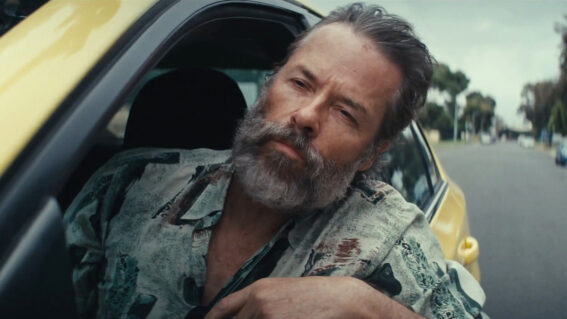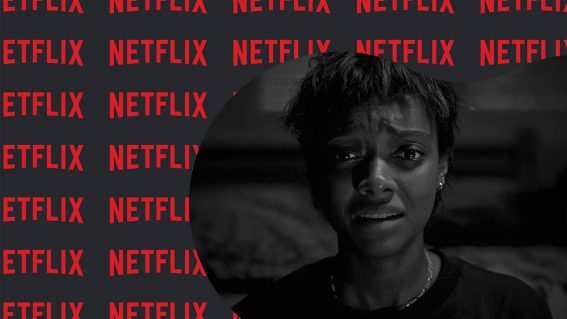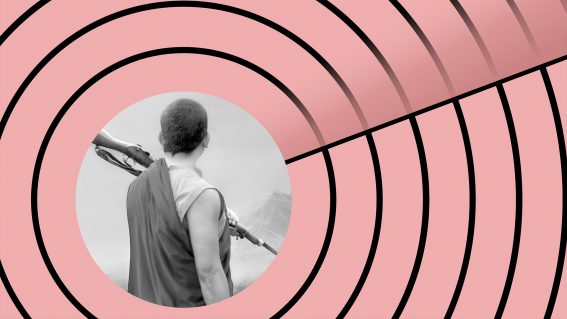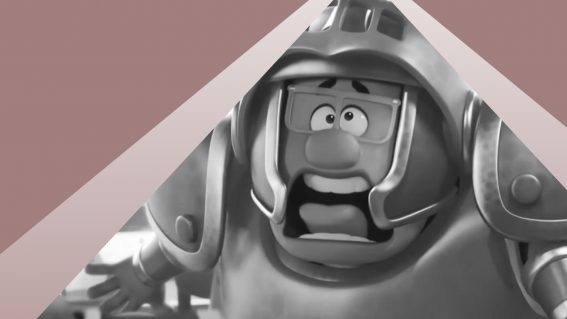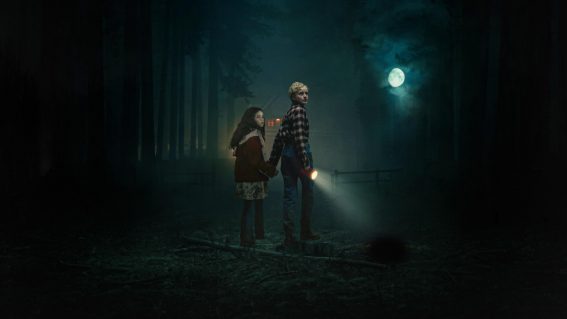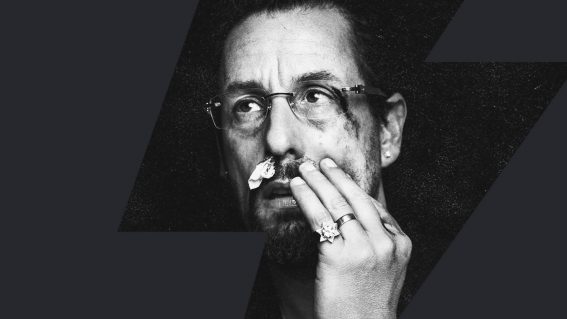The bizarrely bleak twist in Nicolas Cage’s first western The Old Way
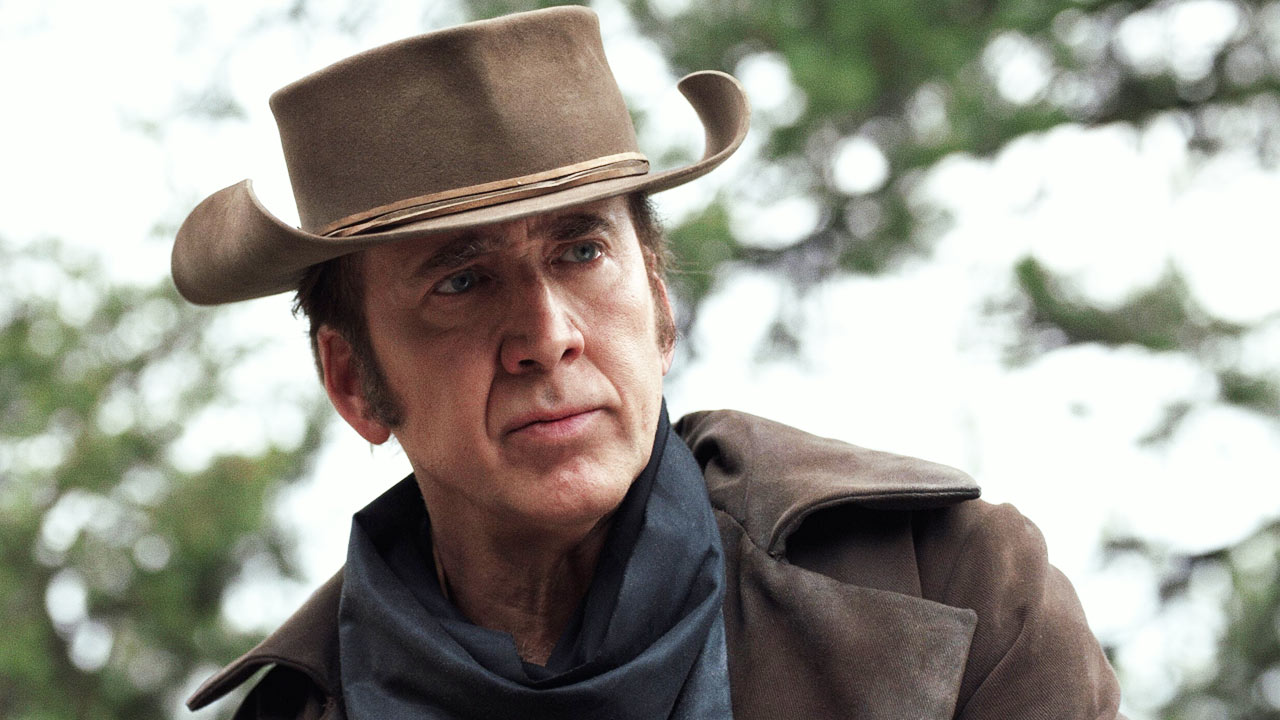
Nicolas Cage’s new first The Old Way is, for the large part, a boilerplate revenge movie set in the old West. But all of a sudden, writes Luke Buckmaster, an unexpected character development makes it weirdly interesting. Spoilers ahead.
The Old Way
The title of Nicolas Cage’s first western, The Old Way, refers to good ol’ fashioned frontier justice. As in: if you’ve got a problem with some Johnny-come-lately who strolls into the local saloon like he owns the place, shoot him between the eyes then carry on with your day. But law enforcers want the trigger-happy populace to know that times have changed. After a gang of feral miscreants murder the wife of Cage’s protagonist Colton Briggs—an ace gunslinger who moved onto a non-violent life as a shopkeeper—the Marshal (Nick Searcy) tasked with capturing her killers implores him not to take the law into his own hands.
“This here land is now part of a new country,” he says. “We’ve got laws, we’ve got due process. Folks just don’t go around killing other folks. That ain’t the world any more.” But this is a revenge movie. And Cage is a badass. So we know Briggs won’t stop until he’s found the culprits and smoked ‘em. Director Brett Donowho launches a True Grit-esque setup, pairing the stoic lead with a much younger companion—Briggs’ 12-year-old daughter Brooke (Ryan Kiera Armstrong)—contrasting world-weary bastardy with the glow of youthful innocence.
The title can also reflect Donowho’s embrace of creaky genre conventions: the old way; the templated way; the way of many productions that came before. And yet…this largely unexceptional film contains an unexpected character-based development that took me by surprise—not only reframing its lead characters, but potentially casting previous action movies in a different light. This development could be considered a twist; if you don’t want it revealed, stop reading now.
A key scene occurs around 45 minutes in, when Briggs and Brooke discuss a plan to ambush an incoming rider. Briggs decides to use the girl as bait, instructing her to: “cry, make him feel sorry for you.” When she responds “I don’t know how to cry,” he’s taken aback—not just because this is a strange thing for a girl to say, but because he understands the significance of this revelation.
Cage then delivers the kind of monologue that, in a science fiction film, could come from a robot or an alien—something impersonating a human being. He fires off: “Now you listen to me! People in this world expect you to act like they do! They expect you to laugh at their jokes and sigh at their babies and cry at their funerals. And if you can’t learn to do these things they won’t accept you. They’ll push you out. Do you want to make it in this world? Do you want to fit in? Then you’re gonna have to figure out how to act like them.”
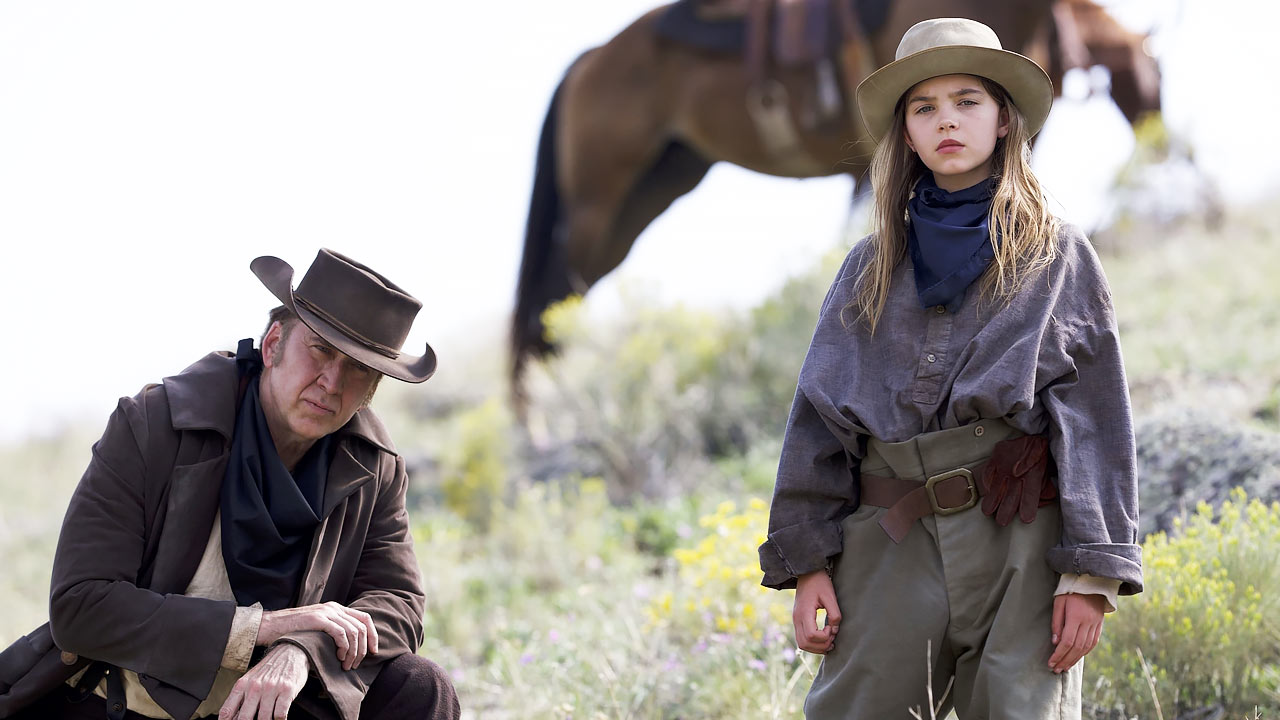
How to act…like them? What’s going on here? We soon learn that Briggs has lived his entire life without feeling any emotions. He’s learned to emulate emotional responses to fit in, but has never genuinely felt joy, sorry, happiness etcetera. In contemporary diagnostic parlance, this is called alexithymia—described by the BBC as “a kind of emotional ‘colour-blindness’” that prevents people “from perceiving or expressing the many shades of feeling that normally embellish our lives.”
The Old Way’s centerpiece scene, acting-wise, is a long campfire monologue during which Briggs stares into the flames and reminisces on his formative experiences as a man who doesn’t “do” emotions. He begins:
“My entire life, even as a boy I knew. I knew I was different. My mother always said I didn’t cry as a baby. I didn’t laugh. I didn’t shed a tear at her funeral. Lots of folks did, but I didn’t. Growing up, the other kids would play games, and joke with each other. They would cry if they got hurt, or if they were scared. I would watch ’em. I got pretty good at pretending. Good enough, anyway. Pretending I was like the other kids. Pretending I was….normal.” Briggs goes on and on, for several minutes, concluding that: “it was as if I’d been born dead inside. But I didn’t care. Because I was DEAD INSIDE.”
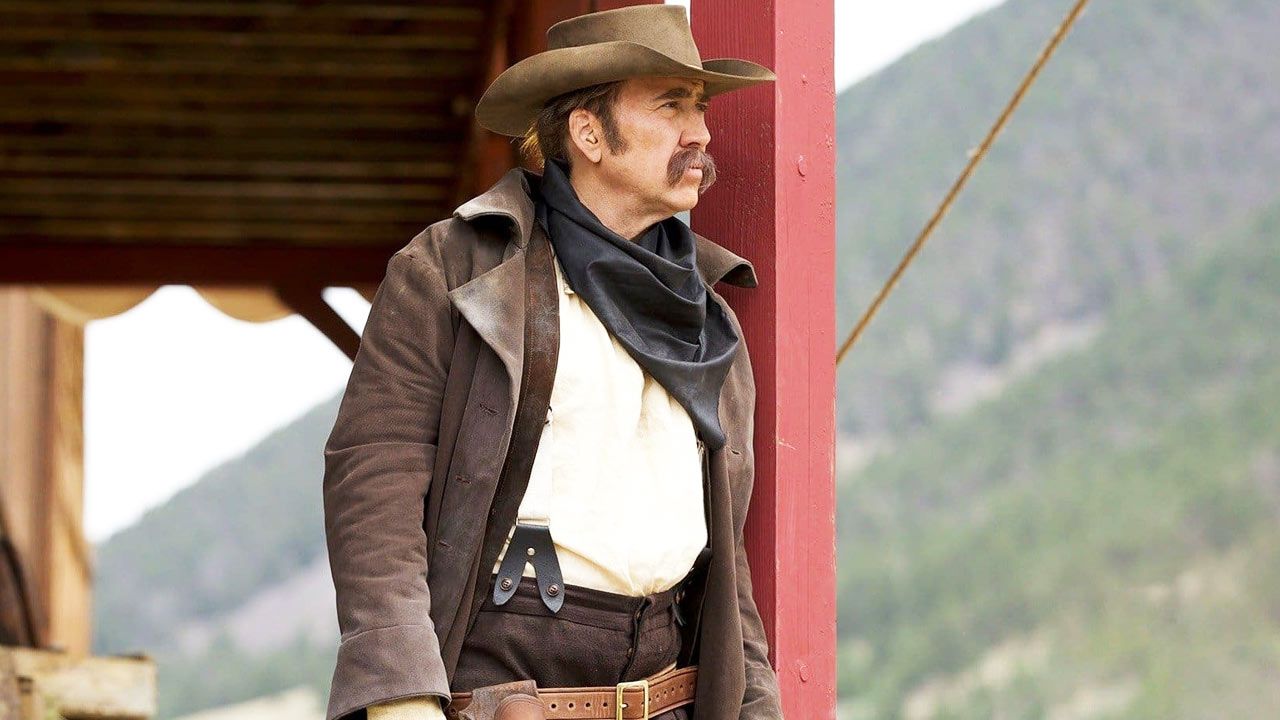
We’re used to watching action movies that revolve around purpose-driven tough guys administering brutal retribution. We’re not so accustomed to learning that the protagonist has no heart, and is effectively—to borrow Briggs’ own words—“dead inside.” That’s a weird development—particularly for a story involving moral comeuppance. It puts Colton Briggs in the same bucket as Meursault, the protagonist of Albert Camus’ great novel The Outsider. He was sentenced to execution after killing an Arab man on a beach, but Camus famously asked: was Meursault really punished for that, or was he punished for not crying at his mother’s funeral?
Unlike Camus’ character, Briggs figured out that pretending to have emotions is necessary for survival. The film’s double revelation is that alexithymia is hereditary (thus his dramatic reaction to the news that Brooke doesn’t know how to cry). Having a protagonist with this condition provides a narrative justification for why Briggs is fearless: fear is an emotion, after all, and he’s never experienced it. After the film, I wondered how many other hard-bitten characters might have undiagnosed alexithymia. John Wick, perhaps? Harry Callahan? Beatrix Kiddo? Ellen Ripley? Imperator Furiosa? James Bond? Ethan Hunt? Rooster Cogburn?
Some of these characters have moral imperatives, but that doesn’t mean they necessarily feel emotions. And on occasions in which they behave emotionally, who’s to say they aren’t, like Briggs, faking it—delivering a response they’ve been conditioned to perform? You can imagine my surprise to discover a mid-range Nic Cage action flick (positioned at #57 in The Cage Gauge, my ranked list of every Cage movie) asking interesting questions about the kind of heroes we root for.







